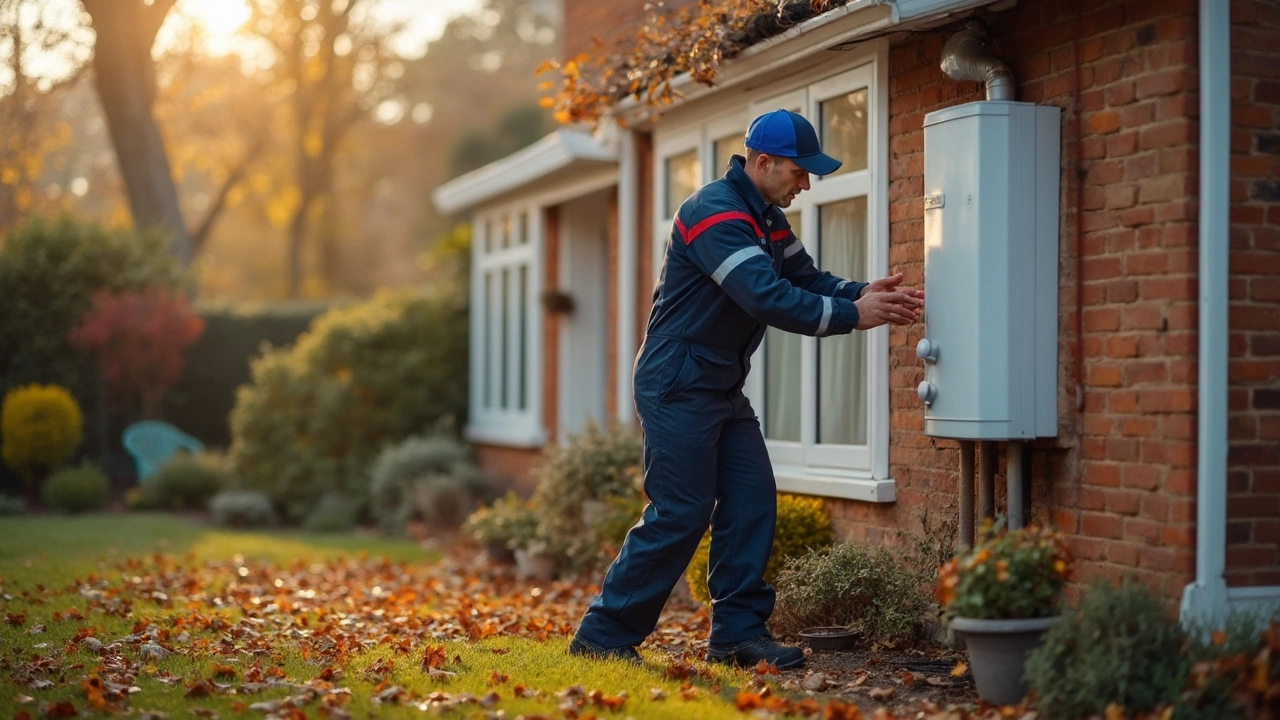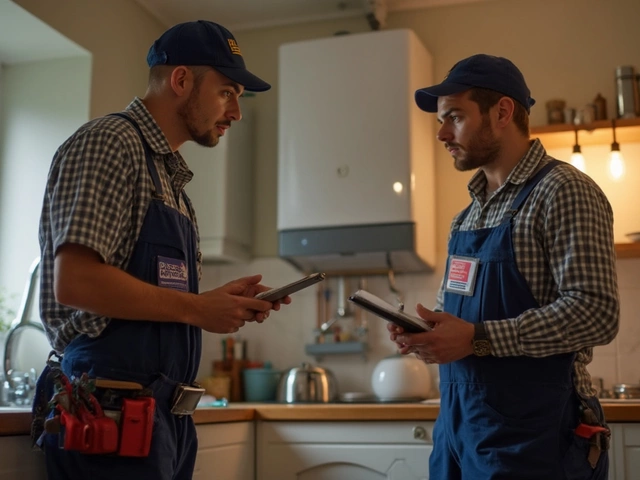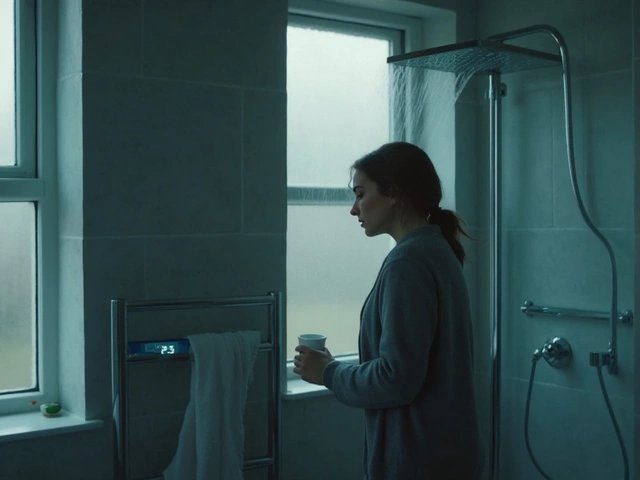Thinking about replacing your boiler? It might sound like a big deal, but let's break it down. If your boiler's on its last legs, swapping it out could actually save you lots of headache—and money—in the long run. But what's really involved? First up, you've got to deal with the old, clunky boiler. Out with the old, right?
Then, there's choosing the new one. It’s kind of like picking a new car, but instead of horsepower, you’re looking for energy efficiency and size. Do you know how many BTUs your home needs? That might be worth pondering with your morning coffee!
Understanding the Process
So, you've made the call: it's time to replace the old boiler. What's next? Well, the process itself isn’t as mysterious as you might think. Knowing the ins and outs can help you get prepared and avoid surprises along the way.
Out with the Old
The first step in the boiler replacement process is to do away with the one that's been hanging out in your basement or closet for too long. This involves draining and disconnecting the system. A professional will handle the dismantling—certainly not a job for the faint of heart.
Selecting Your New Boiler
Now comes the exciting part: choosing your new boiler. You'll want to pick something that's the right size for your home’s needs. Too large, and you're wasting energy. Too small, and you’ll be left cold. Energy efficiency is key. Most new models offer better efficiency, which means long-term savings.
Professional Installation: A Must
When it comes to installation, there's no room for mistakes. A licensed technician ensures the new boiler is connected safely to your existing system. This is not a DIY job. Besides fitting the unit, they'll also handle all the necessary checks to get it up and running smoothly.
Finer Details: Costs and Time
Wondering about the time and cost? Typically, the whole process can take a day or two, depending on the complexity of your setup. As for cost, it varies considerably, but on average, homeowners might expect to spend a few thousand dollars, installation included.
| Step | Time Required | Average Cost |
|---|---|---|
| Old Boiler Removal | Half a day | $500 |
| New Boiler Installation | One day | $1,500 - $3,000 |
Keep in mind, investing in the right system upfront with professional service ensures a hassle-free home heating solution for years to come. Hopefully, this breakdown demystifies the process a bit, making it feel less like a big mountain to climb and more like a series of manageable steps.
Choosing the Right Boiler
Picking the right boiler for your home is key. It’s not just about grabbing whatever’s available; it’s about finding the perfect fit. So what should you look for?
Size Does Matter
Getting the correct size isn't about physical dimensions; it's all about the output. You’ve got to think about the BTU (British Thermal Units) that lets the boiler heat your space effectively. A boiler that's too small won’t heat your home properly, and one that's too big can waste energy. Plus, it'll hit your wallet harder than you'd like. For most homes, a general rule of thumb is about 30 BTUs per square foot.
Types of Boilers
There are several types of boilers to consider, but let’s boil it down (pun totally intended) to the main ones.
- Combi boilers: These are nifty because they provide heat and hot water without needing a separate tank. Great for smaller homes where space is tight.
- System boilers: Need a water tank, but they’re good at maintaining high water pressure for larger homes.
- Conventional boilers: Also known as regular or traditional boilers, these need a couple of tanks but are reliable for older homes with existing pipework.
Efficiency is Key
Modern boilers are way more efficient than older models. You’ll want one with a high efficiency rating to cut down on energy bills. Look for models with an 'A' rating under the ErP (Energy-related Products) scheme, which means they’re at least 90% efficient.
Price Points
No one wants a boiler that breaks the bank. While they can be a sizeable investment, consider it a long-term save. Common prices range from around $2,500 to $10,000 installed. It’s a big gap because of type, size, and sometimes even brand.
With the right boiler replacement, not only does your home become cozy, but you could also watch your home heating bills drop. Make sure you do your homework or talk to a pro who can guide you through the process. Your toes will stay toasty, and your wallet won't get a chill.

Installation Logistics
So you've chosen your new boiler and you're ready to get it installed. But wait, how does the whole thing go down? Well, it starts with scheduling the install with a qualified contractor. Timing is everything here, especially during the cold months when everyone else might also be having boiler issues. Book early if you can!
The actual installation day can be a bit of an adventure. The crew will begin by removing your old unit, which might involve disconnecting it from the gas and water lines. They’ll also clear the space, so having easy access ready is a huge help. Be prepared for a bit of noise and some minor mess, too. It’s all part of the process.
Once that's done, the real fun begins—installing the new boiler. This involves setting up the new system and making sure it's hooked into the house’s existing pipework and duct system. Unexpected hiccups can pop up, like needing to upgrade your flue or checking the pressure of your water mains. These are totally normal, so try not to stress.
Testing and Safety Checks
Before calling it a day, the installation team will go through rigorous testing. These tests make sure everything works properly and safely. They'll check the gas connections, boiler controls, and ensure it's energy-efficient. You might get a rundown on how to operate it. This is your chance to ask all the questions—don’t be shy!
Pro Tip: Confirm that the contractors dispose of the old boiler responsibly. Some companies recycle parts to be extra eco-friendly.
Time and Costs
Installation might span anywhere from a few hours to a couple of days, depending on your specific situation. The costs can vary widely, but generally, expect to pay a tidy sum after factoring in both the new boiler cost and the professional installation. While cutting corners with DIY may be tempting, remember that faulty installations can be risky and may void warranties.
Post-Replacement Tips
Alright, your shiny new boiler is all set up! But wait, don’t just get back to your daily hustle just yet. Taking a few extra steps now can help keep things purring smoothly for longer.
Keep It Cozy, Not Toasty
First things first, resist the urge to crank that new unit up to the max. Running your boiler at a moderate temperature is not just good for its health; it’s also better on your wallet. This way, you’re getting efficient heating without the hefty bills.
Show It Some Love Regularly
Regular check-ups are key. Schedule a yearly maintenance appointment. This is crucial, especially during those chilly months when your home heating system works overtime. Keep an eye (or ear) out for any unusual noises or issues.
Optimize and Save
Try upgrading your thermostat to a smart one. It lets you control your boiler from your phone, so you’re not heating an empty home. Plus, it helps in saving energy, which means lower heating costs.
Check for Leaks
Keep an eye out for water puddles around your boiler. A small leak might not seem like a big deal, but over time it could lead to water damage. If you spot anything amiss, call in your HVAC expert swift.
| Maintenance Task | Frequency |
|---|---|
| Professional Inspection | Once a year |
| Thermostat Check | Quarterly |
| Leak Inspection | Monthly |
Following these tips will help keep your heating system humming smoothly. Remember, a little bit of attention here and there can prevent those emergency calls when winter hits its peak!




